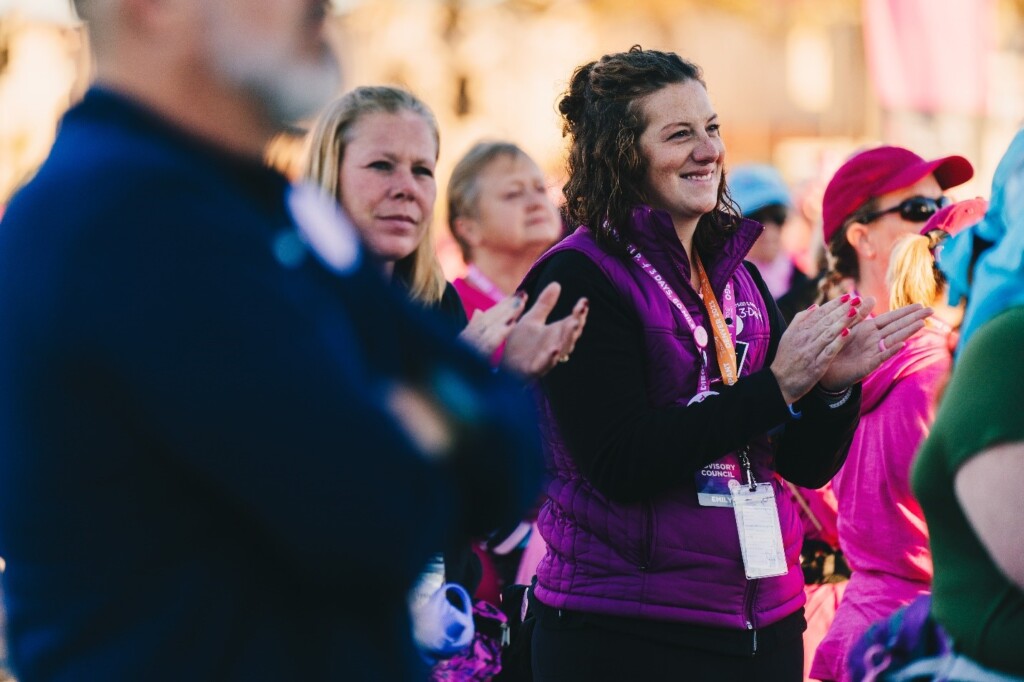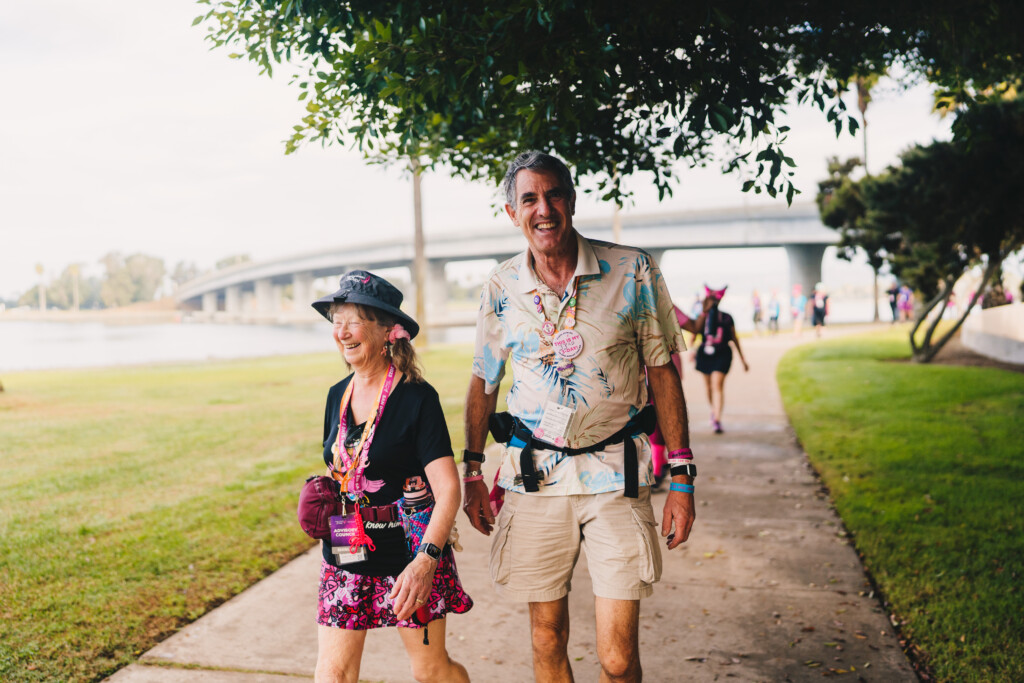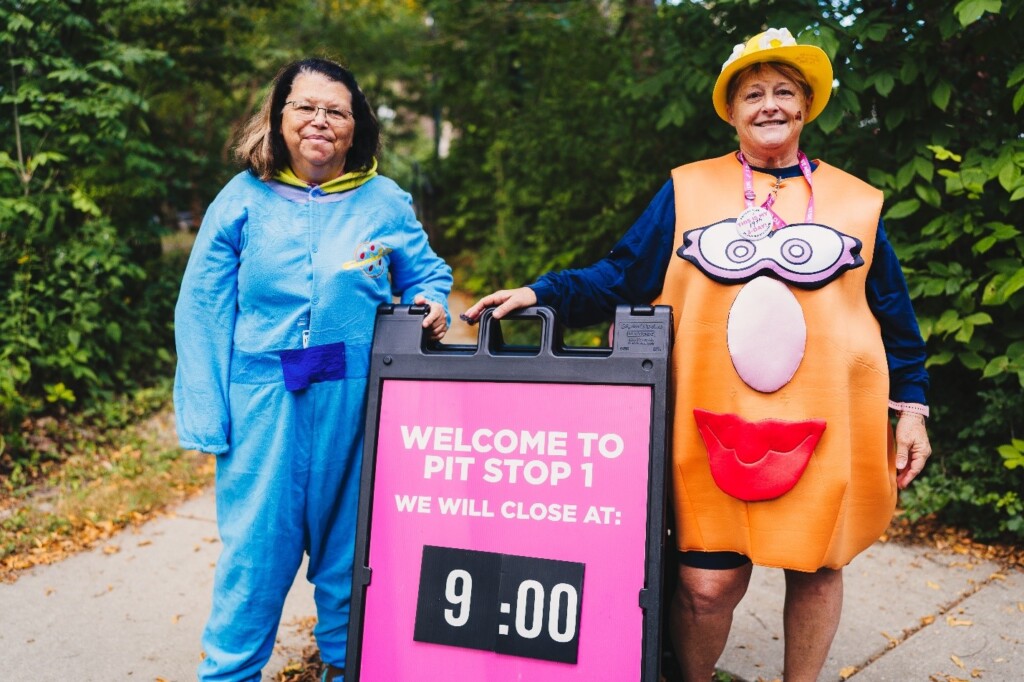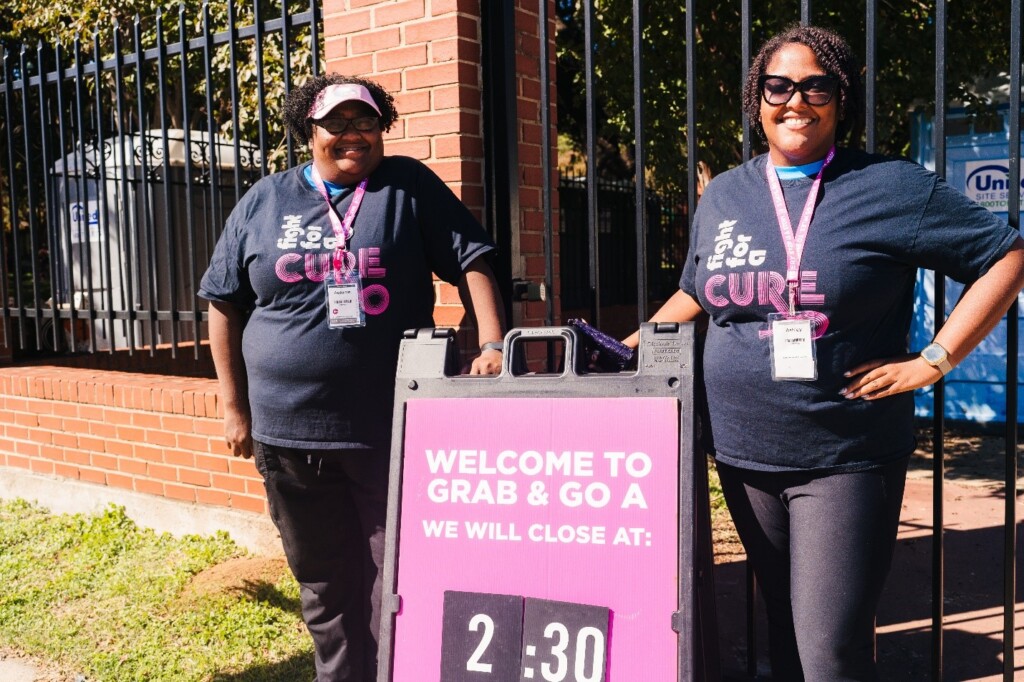In 2023, fourteen individuals participated in all five Susan G. Komen 3-Day® walks. Week after week, they trained and fundraised to walk 300 miles over fifteen days. From the bustling streets of Boston to the sunny shores of San Diego, each participant’s journey was a testament to their dedication to ending breast cancer.
These are some of their stories.
Emily W.
Emily is a breast cancer survivor, full-time working mother of three beautiful daughters, a devoted wife to her high school sweetheart, and a lover of life’s simple pleasures. From an ice-cold lemonade on the beach to hosting joy-filled game nights, she finds happiness in the company of loved ones and the warmth of shared laughter. She began walking the Komen 3-Day for others in Michigan in 2017 and continues to walk for her pink survivor sisters, for the generations to come, in honor of her own survivorship, and for Susan G. Komen’s mission to end breast cancer.
Participating in the 3-Day® has become a cherished tradition for her, with San Diego 2023 marking her 11th event and the accomplishment of being an all-city walker. This endeavor was a dream which she had envisioned since her very first walk and a challenge she was determined to accomplish before breast reconstruction surgery she had scheduled for early winter. Each city presented its own set of highlights and challenges, but through it all, she found herself surrounded by newfound friends, sharing stories, and enveloped in the spirit of the Pink Bubble. Crossing the final finish line in San Diego filled Emily with a sense of pride and accomplishment, reaffirming her dedication to the cause.
She found that fundraising for five events also required immense creativity and determination, which she embraced wholeheartedly. From running an at-home bakery that donated proceeds, to hosting donation-based garage sales and wine bottling parties, Emily explored various avenues to support her cause. She even involved her daughters who set up lemonade stands throughout the summer to raise money. As a seasoned 3-Day participant, Emily offers valuable advice to first-time walkers: approach the event with an open heart, embrace the unique experiences of each city, and above all, ensure you’re well-trained for the journey ahead. “But seriously, train. 60 miles is a long walk!” Since the conclusion of the 2023 3-Day season, Emily has focused on her recovery from reconstruction surgery and, despite the challenges she faces, she remains resolute in her determination to continue walking in 2024. Emily is consistently training and fundraising with the New England and San Diego 3-Days on the horizon.
Kat C.
Kat is a devoted wife, cat parent, and theater enthusiast whose vibrant personality and unwavering passion for all that she does shines through in every aspect of her life. Her journey through the 3-Day is fueled by the memories of her grandmother, Nell Marie Grant Haun, and her mother-in-law, Helen Lockie, who serve as a constant reminder of why she walks. Her “Pink Angels” accompany her on every step of her 15-year journey, however, Kat’s decision to participate in all five events in 2023 was driven by her desire to celebrate the people still with her, including the Pink Bubble family she has gained along the way.
Since her inaugural 3-Day event in Arizona in 2008, Kat has participated in an impressive 22 3-Day events across various cities, including San Diego, Dallas/Fort Worth, Twin Cities, New England, Chicago, and Denver. She decided to crew in New England instead of walking, which provided her with a new perspective on the event and a newfound appreciation for the dedication of the 3-Day crew. From navigating weather-related delays to ensuring the safety and comfort of walkers, Kat’s experience behind the scenes reinforced her admiration for the tireless efforts of the event staff and volunteers.
As a seasoned 3-Day participant, Kat emphasizes the importance of training, community engagement and strategic planning, ensuring that participants are well-prepared for the journey ahead. She suggests a myriad of fundraising methods, including personalized emails, social media campaigns, and fundraising events. Since the fulfilling moment of crossing the San Diego 3-Day finish line, Kat has focused on self-care and spending time with loved ones. She spent a pre-Christmas day with her birth family in Texas (her personal and genetic connection to breast cancer), who are an inspiration to Kat. “Playing Cards Against Humanity with three generations gets crazy. I needed that great laugh,” she shared. Looking ahead to 2024, Kat is eager to continue her journey with the 3-Day, participating in all four cities and striving to reach her fundraising goal.
Nancy M.
Nancy is a two-time breast cancer survivor and beach enthusiast who has walked the 3-Day 29 times since she took her first steps in the Pink Bubble in the 2008 Philadelphia 3-Day, less than two years after her initial diagnosis. She first heard of the 3-Day when her coworker drove past the camp and told her to check it out. “I went by and pulled over to the side of the road just looking at the sea of pink tents and decided the next year, I would be in one and the rest is history!” she shared.
This past year, she crewed in New England and Chicago on the medical team, crewed a grab & go in Denver, crewed Friday and Saturday and walked Sunday in Dallas/Fort Worth with her team Pink Soles in Motion, and walked all three days in San Diego. To fundraise for these events, she got creative by hosting in-person events, helping with a yard sale, asking around at tailgates, and doing whatever else she could think of. Nancy’s advice to anyone interested in participating in the 3-Day is to just know you can do it. She has had friends give her excuses like they don’t like porta potties, or countless other reasons, for which she says — just do it anyway! After participating in all four events in 2022 and all five in 2023, Nancy looks forward to embarking on all four 3-Days this year again, crewing in New England, Denver, and Dallas/Fort Worth and walking in San Diego.
Shirley E.
Shirley is a 28-year breast cancer survivor who loves to lead an active lifestyle, travel, care for her husband and two cats, cook, and crochet. When not at the 3-Day she choreographs ballroom dancing with her husband, attends two weeklong dance events in the summer, and takes a hiking trip overseas at least once a year; this year she’s headed to the Azores. She began walking in the 2009 San Diego 3-Day after her niece asked her for a 3-Day donation the year prior. “I told her I would support her if she would walk again in 2009 so that I could walk with her. She did, I walked, and I haven’t stopped walking since then,” she shared. Since then, Shirley has walked 32 times, with 2023 marking her second time as an all-city walker.
Walking 300 miles and fundraising for all five cities was a challenge that Shirley set for herself. When she finally crossed the finish line in San Diego, she was so proud of herself, emphasizing the importance of using a sweep van whenever necessary. Since then, she’s been busy crocheting for her 2024 fundraising and waiting for the weather to warm up a bit to kick off her training.
Shirley leans on her loved ones to help her expand her network for donations and emphasizes the impact of matching gifts. Her favorite ways to raise funds include Facebook fundraisers, sending out letters to friends, and bringing her crocheted goods to craft fairs including her signature crochet critters. While she would love to do all four cities again, Shirley’s grandson is getting married the weekend of the Denver 3-Day, so she looks forward to doing it all again in New England, Dallas/Fort Worth, and San Diego this year.
Brooke K.
Brooke is a woman of many passions, working for an airline, teaching at a university, and helping women achieve financial independence. In addition to her many pursuits, she has participated in the 3-Day 18 times in honor of her mom Kathy, who passed away from breast cancer in 2013. “My goal was to raise $10,000 for her 10-year anniversary and walking all 5 cities felt like the right way to honor her,” she shared. Brooke began walking in 2014 and found that being an all-city walker was empowering and therapeutic as she got to experience each unique city and meet countless new friends.
For Brooke, the toughest challenge was meeting the fundraising deadlines, but she and her teammates kept each other on track. She raised the $10,000 through many creative means, including cleaning toilets and baseboards, taking surveys online, selling Dippin’ Dots, working at concession stands, collecting coins off the ground, scanning receipts, selling pretzels at Oktoberfest, driving friends to the airport, washing cars, matching gifts, and participating in research studies. Her biggest fundraising advice for any 3-Dayer is to join a team to ensure that you have support and opportunities to be a part of larger fundraising events. She also encourages every first-time walker to never give up and to reach out to 3-Day veterans and your coaches for any assistance and advice.
Since crossing the finish line with her partner Tim in San Diego, Brooke has been fundraising and gearing up for the 2024 walks, where she will be an all-city walker once more. Her team Pink Soles in Motion has already held a fundraiser where they raised over $11,000 and have been doing training walks and challenges to keep moving forward.
These All-City participants are incredible, and it takes tremendous commitment, but any way you choose to participate makes a difference. Thank you for being part of the 3-Day!










